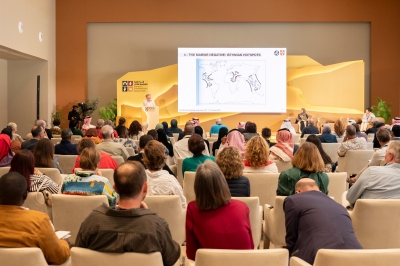
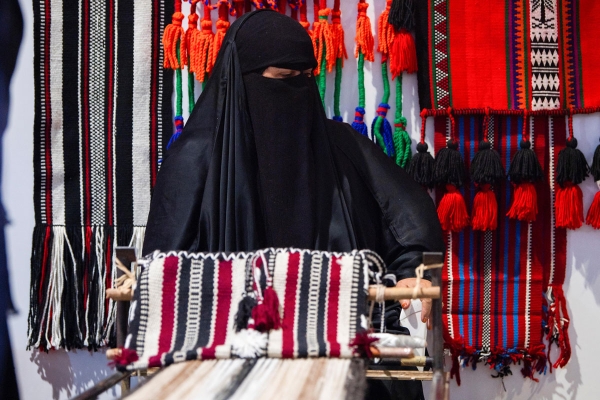
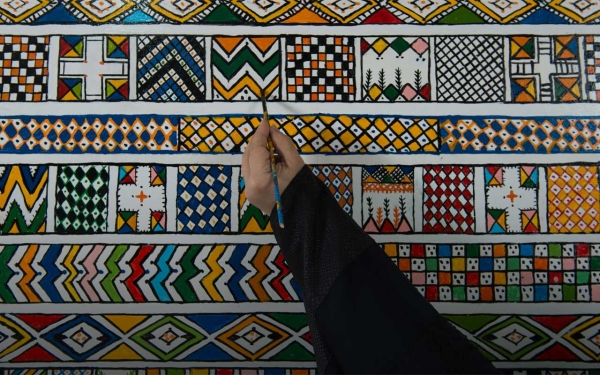
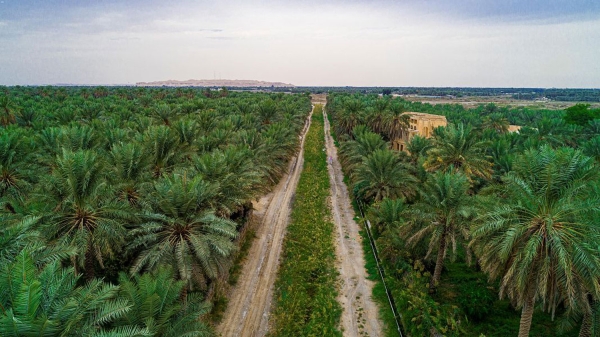
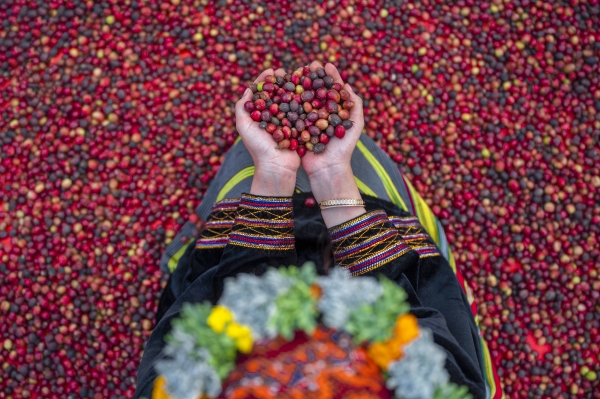
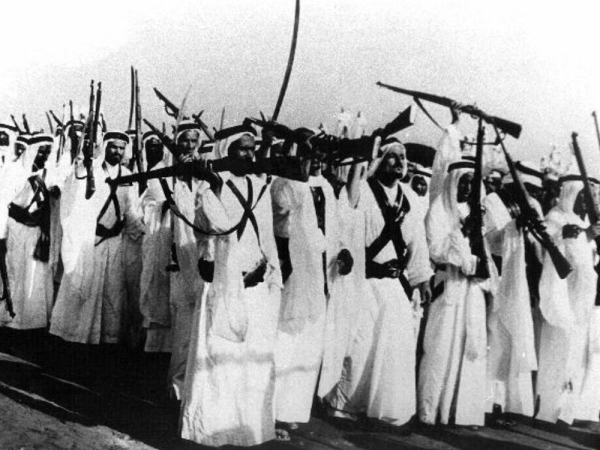
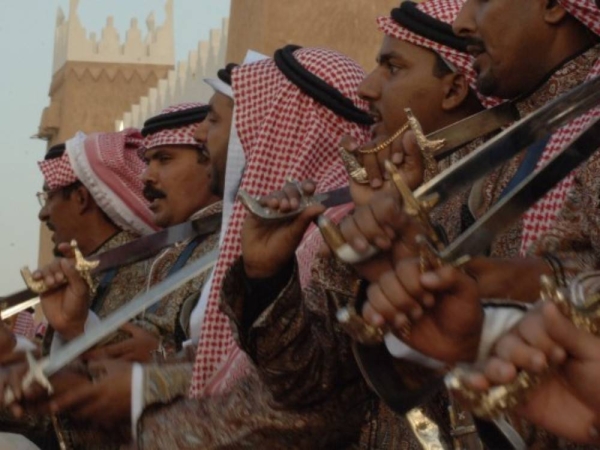
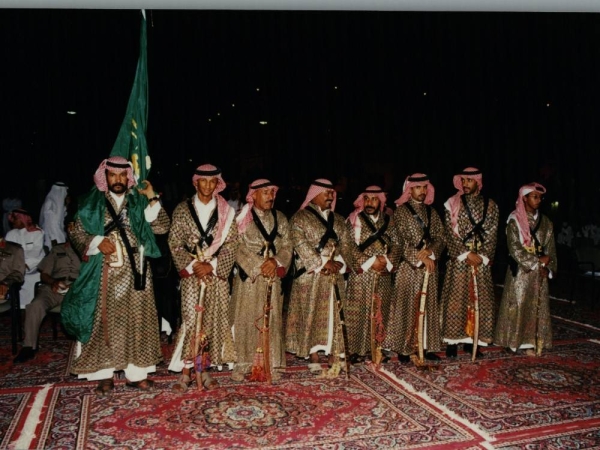
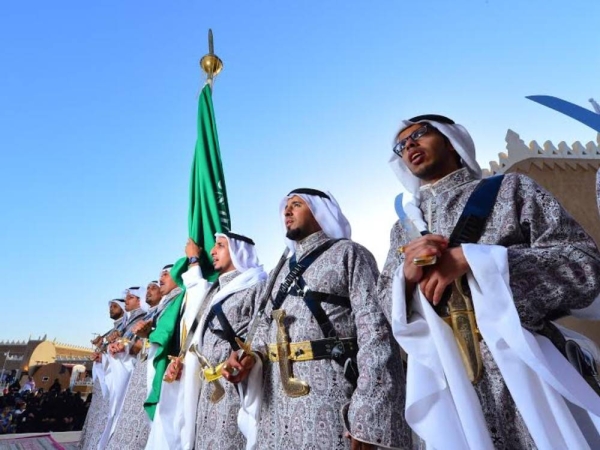
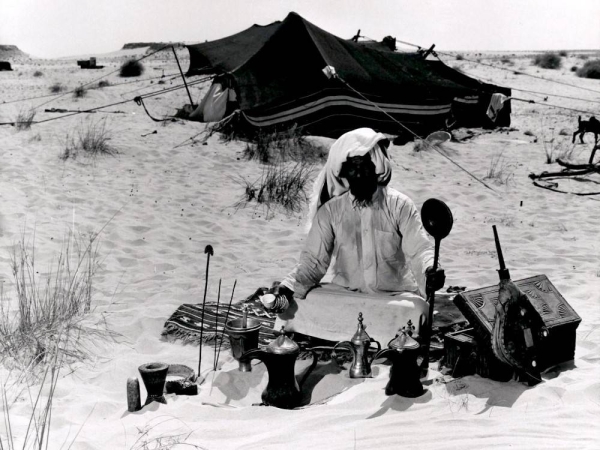

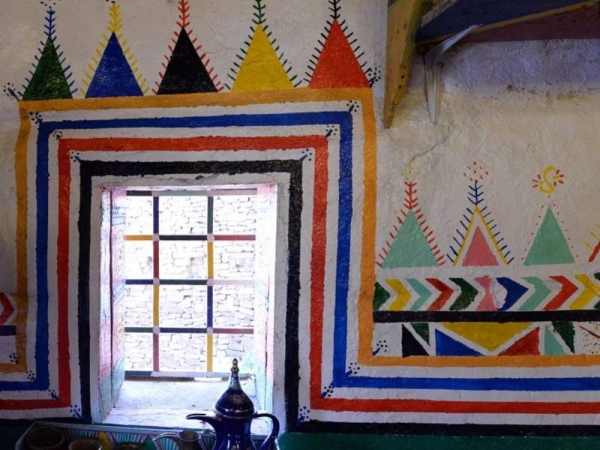
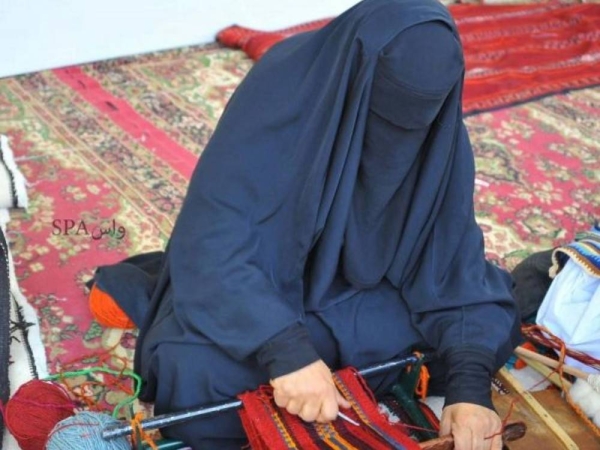
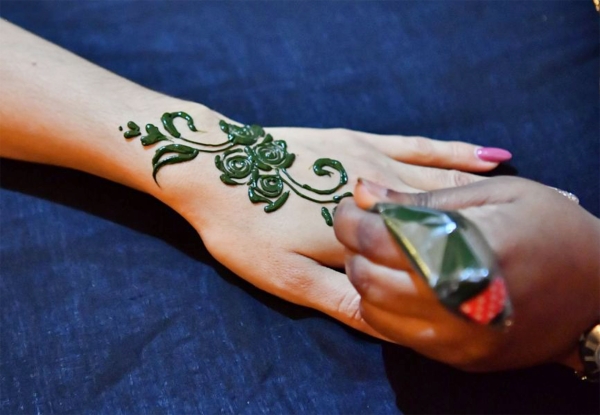
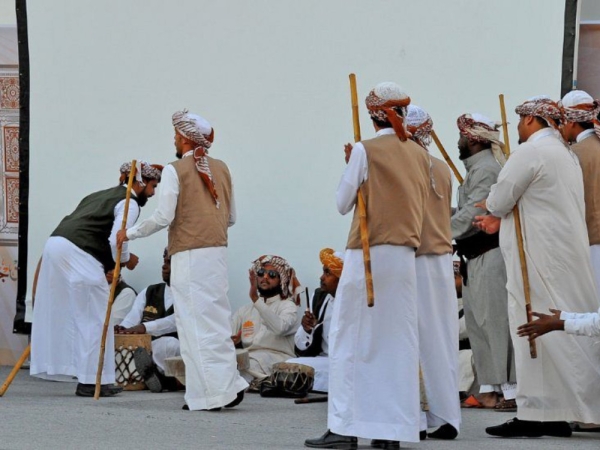
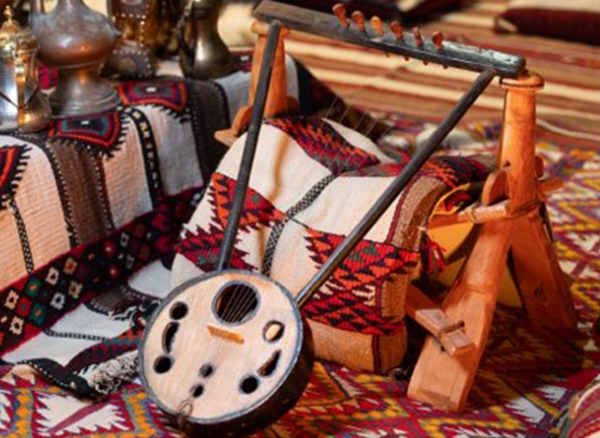
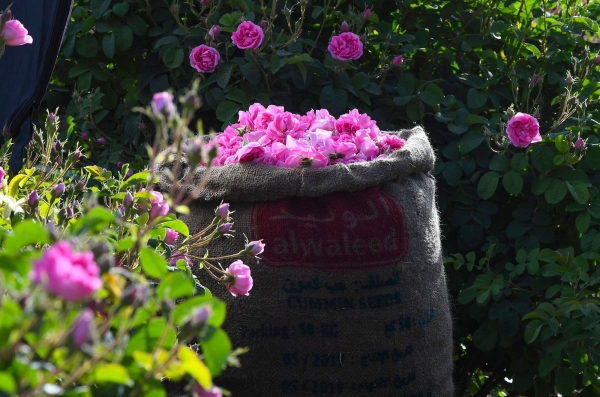
The Saudi Intangible Cultural Heritage Inscribed on the UNESCO List encompasses oral traditions, performing arts, social practices, ceremonial events, and traditional crafts in the Kingdom of Saudi Arabia. The Kingdom actively implements measures to preserve and protect this heritage in line with the UNESCO Convention for the Safeguarding of the Intangible Cultural Heritage, to which it became a signatory in January 2008.
Intangible cultural heritage list in Saudi Arabia
The total number of intangible cultural heritage elements uniquely inscribed by UNESCO for the Kingdom is five: Najdi Ardah 'Saudi Ardah dance', al-Mezmar dance, al-Qatt al-Aseeri art, and Saudi Khawlani coffee, Taifi Rose. Moreover, the Kingdom shares eleven elements with other countries: al-Majlis, Arabic coffee—officially recognized as "Saudi Coffee" in 2022, al-Bayzarah or falconry, al-Sadu weaving, al-Heda'a (calling camel flocks), and Arabic calligraphy, Harees, engraving on metals, Henna, and the semsemiah musical instrument. In 2015, the Najdi Ardah 'Saudi Ardah dance' was inscribed on the Representative List of the Intangible Cultural Heritage of Humanity as the first unique Saudi cultural element. In the same year, the Kingdom joined the United Arab Emirates (UAE), Qatar, and Oman to inscribe the Majlis and Arabic coffee on the list. Furthermore, in 2016, al-Mezmar dance was inscribed as a unique element for the Kingdom on the list.
The Kingdom's inclusion in the UNESCO Intangible Cultural Heritage List dates back to March 28, 2011, when the Kingdom collaborated with several GCC, Arab, and international countries to inscribe falconry on the list. The inscription was based on a proposal submitted by some of the member states in the organization, including the Kingdom, UAE, Qatar, Belgium, the Czech Republic, France, South Korea, Morocco, Spain, Syria, and Mongolia.
In 2017, UNESCO announced the inclusion of al-Qatt al-Aseeri (the art of decorating house walls in Aseer Province) to the list. In 2019, the Kingdom joined several countries, including Bahrain, Egypt, Iraq, Jordan, Kuwait, Mauritania, Morocco, Oman, Palestine, Sudan, Tunisia, UAE, and Yemen in adding date palms, as well as any related knowledge, skills, practices, and traditions to the list. In 2020, the Kingdom and the State of Kuwait cooperated to include the traditional art of al-Sadu weaving in the list. In 2021, Arabic Calligraphy was registered in the list of intangible cultural heritage as a joint file with fifteen other countries. In 2022, the Kingdom registered the skills and knowledge related to the cultivation of Saudi Khawlani coffee in the representative list of UNESCO's intangible cultural heritage. In 2022, the Kingdom also registered camel herding in the representative list in collaboration with Oman and the United Arab Emirates. In 2023, the dish "Harees" (its knowledge, skills, and practices) was registered in the list in partnership with the United Arab Emirates and Oman. In 2023, the Kingdom registered the arts, skills, and practices related to the craft of engraving on metals (gold, silver, and copper) in a joint file with nine other countries. In 2024, the Kingdom registered the "cultural practices related to Taifi Roses," and also registered the customs related to henna engravings in the list in collaboration with fifteen other countries, and the sesame machine in partnership with Egypt.
Saudi Intangible Cultural Heritage Inscribed on UNESCO List
Saudi Ardah
The Saudi Ardah, a cultural folk heritage, has transitioned throughout Saudi history from battlefields to national festivals. It is performed at celebrations, social events, and holidays in the Kingdom and serves as an official protocol for occasions and to honor the presence of state heads.
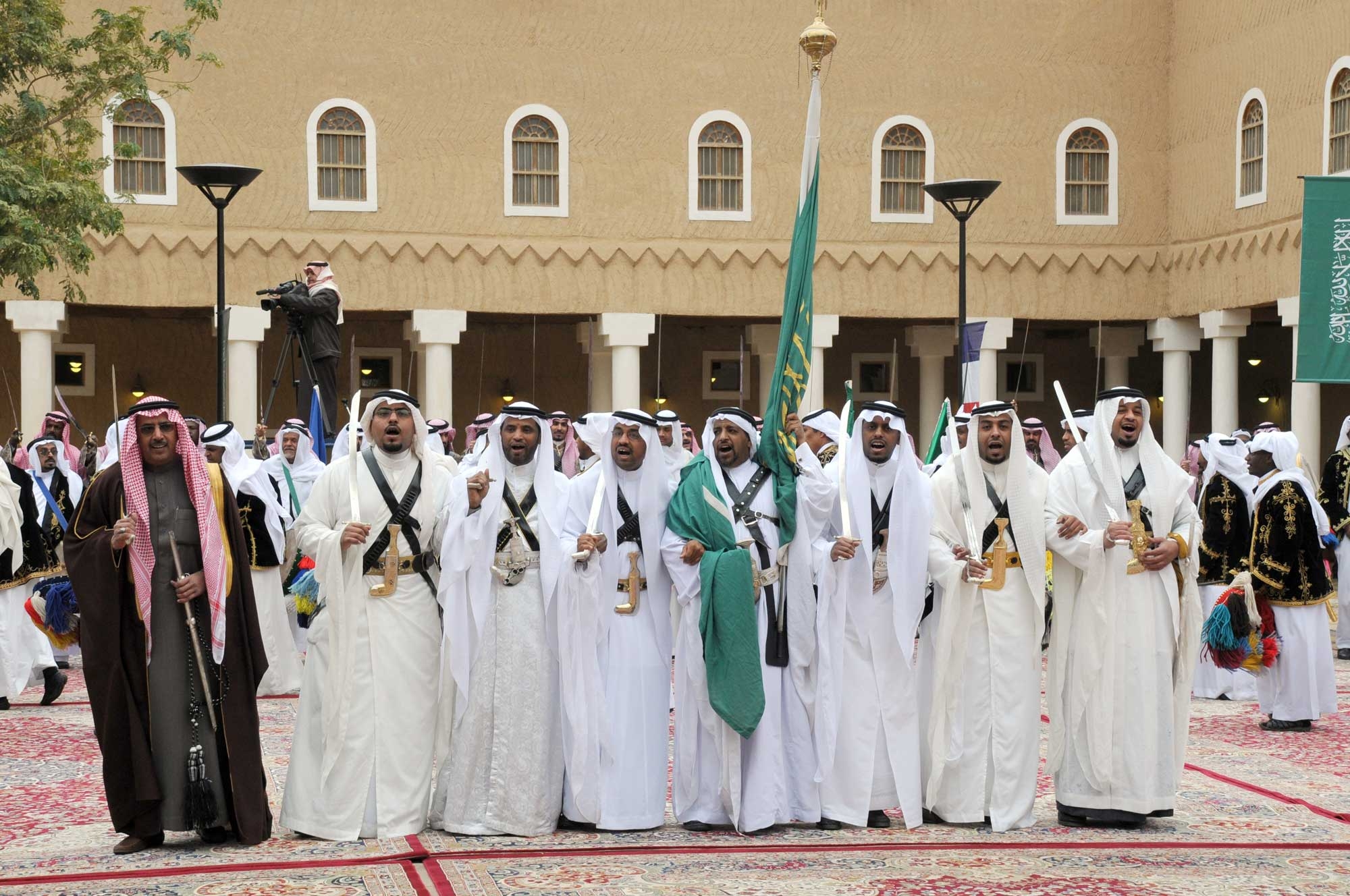
Saudi Ardah attire
The Saudi Ardah is characterized by its unique attire, including al-Murowdin, a white robe with long, wide sleeves that covers the entire body from shoulders to feet worn by the attire of the fighters who accompanied the founding King Abdulaziz Bin Abdulrahman Al Saud; as-Sayah, a robe worn over al-Murowdin that covers the entire body and is made of light fabric; al-Zubun, a garment worn over al-Murowdin that comes in various colors and patterns; al-Mjawwakh, also known as Juakha, which is a bright red robe embroidered with gold threads in intricate designs, traditionally worn by leaders, kings, and knights; and al-Farmaliyyah, a black robe embroidered with gold threads, which is worn by the drummers.
Saudi Arabia's interest in Saudi Ardah
The Kingdom has implemented several government initiatives focused at Saudi Ardah to teach young generations the fundamentals of its art, including 'Diriyah Bayt al-Ardah' initiative launched by the Diriyah Gate Development Authority to teach the youth, in addition to the establishment of the National Center for Saudi Ardah, affiliated with the King Abdulaziz Foundation for Research and Archives (Darah), to develop and revive the heritage of the Saudi Ardah.
Al-Mezmar dance
Al-Mezmar dance is a folklore Hejazi dance featuring canes, drums, and chants. It is one of the traditional arts and folkloric dances in the Kingdom that is held to celebrate family occasions and national celebrations. Participants wear long white robes, while the women contribute to the garment-making process, and local artisans craft the drums and sticks.
Three types of drums are used during al-Mezmar dance, including al-Naqrazan, a hollow drum beaten with two small sticks; al-Mrad a large tambourine; and al-Ilbah, an ornate leather-covered drum with a circular wooden frame. Each chant is known as az-Zoumal, where performers vocally express concepts of courage, friendship, and journeys through songs and poetry. Furthermore, some chants are used to welcome performers from neighboring areas, such as "Haba Haba Billi Ja Ya Marhaba" (Welcome, welcome to the one who has come).
Al-Qatt al-Aseeri
The word "Qatt" in Arabic dictionaries refers to a line, carving, or cut. It is one of the Kingdom's heritage visual arts, which has been known for hundreds of years. Women in Aseer Province use it to decorate the walls of their homes and household items. A woman who practices this art is known as 'al-Qattata.' Al-Qatt art consists of geometric or botanical patterns, blended with bright colors, and inspired by the surrounding environment.
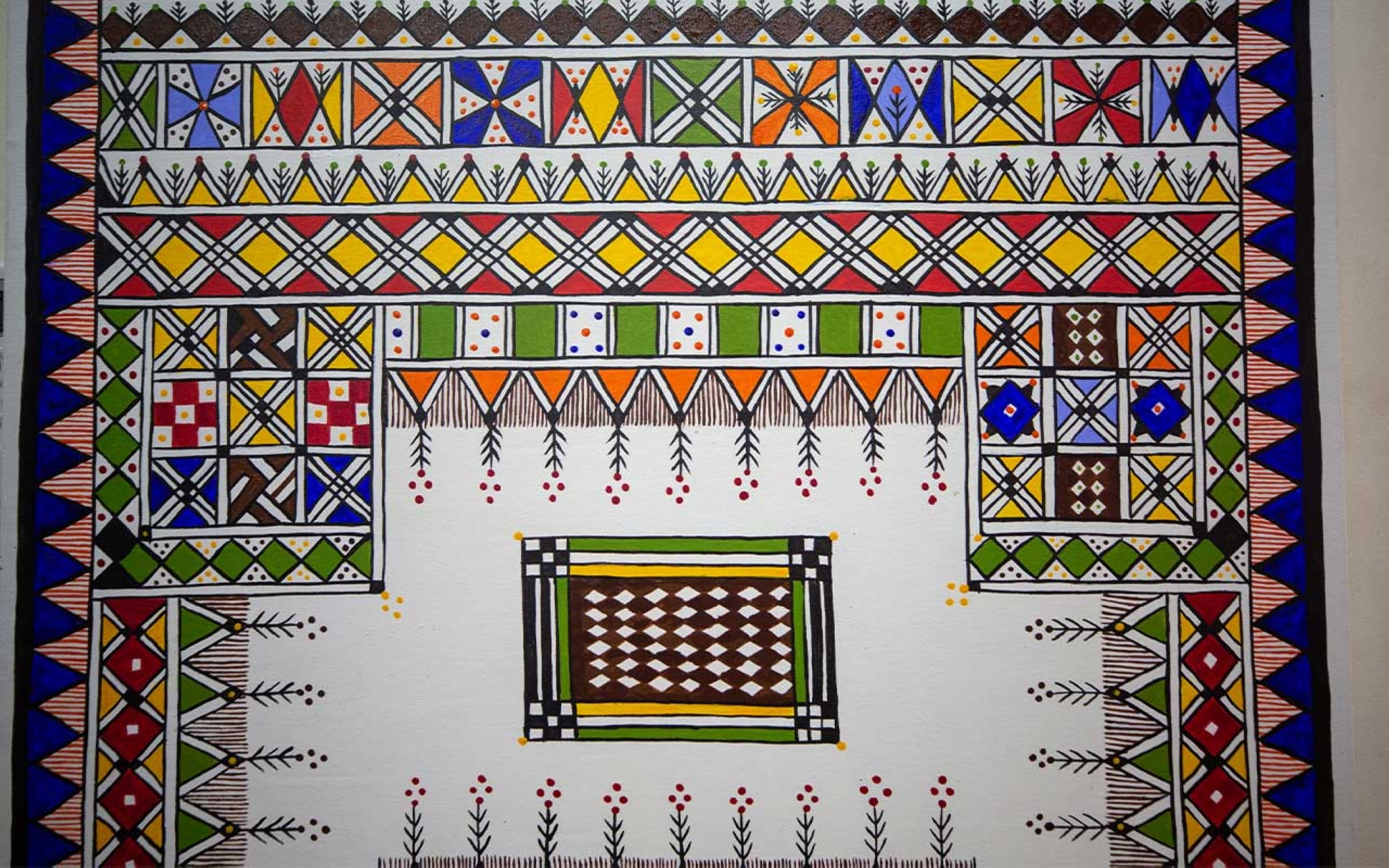
Al-Qatt art visual items
The visual items of al-Qatt al-Aseeri are distributed across ten types. These include al-Banat, symbolizing the female and often appearing at the top of al-Qatt pattern; al-Aryash, which are botanical shapes; al-Maharib, symbolizing the religious aspect of society; al-Rakoun, large adjacent triangular shapes; al-Bilsanah, small rounded dots; al-Amshat, parallel lines running upwards and downwards; al-Tadhiq, three dots resembling corn cobs; al-Mathalith and al-Makhamis, parallel lines between three and five, appearing at the bottom of the pattern; al-Kaff, parallel lines appearing at the bottom of the room wall in different colors; and al-Shabakah, an artistic symbol in one color, consisting of geometric diamonds and squares.
Al-Qatt art has been intertwined with tourism in Aseer Province, as tourists have shown increased interest in items decorated with al-Qatt colors and other products based on this art form. These products include souvenirs that reflect the province's heritage with a modern twist, the manufacturing of small traditional dolls, umbrellas that protect from the sun and rain, women's medals and handbags, keys, women's scarves and shawls, household ornaments, vases, and special household dinnerware.
Saudi Khawlani coffee
Khawlani coffee was named after the tribe of Khawlan Bin Amer, which resides in the mountain range extending between the Kingdom and Yemen, where it was cultivated for more than three hundred years. It is known as the Green Gold and al-Shajarah al-Mudallalah (the pampered tree). Khawlani coffee is one of the rarest and most expensive types of coffee in the world due to its distinctive scent and the oily layer covering its beans. Given the suitable climatic and geographic conditions of Jazan Province, this type of coffee is cultivated in the mountain highlands ranging from one thousand to 1,800 m above sea level.
Khawlani coffee cultivation methods
Khawlani coffee bean seeds are planted in mesh bags filled with soil. Then, they are stored in a shaded area for three to four months until they are transferred to agricultural terraces. After two to three years from planting, the coffee bean grows and is harvested by hand.
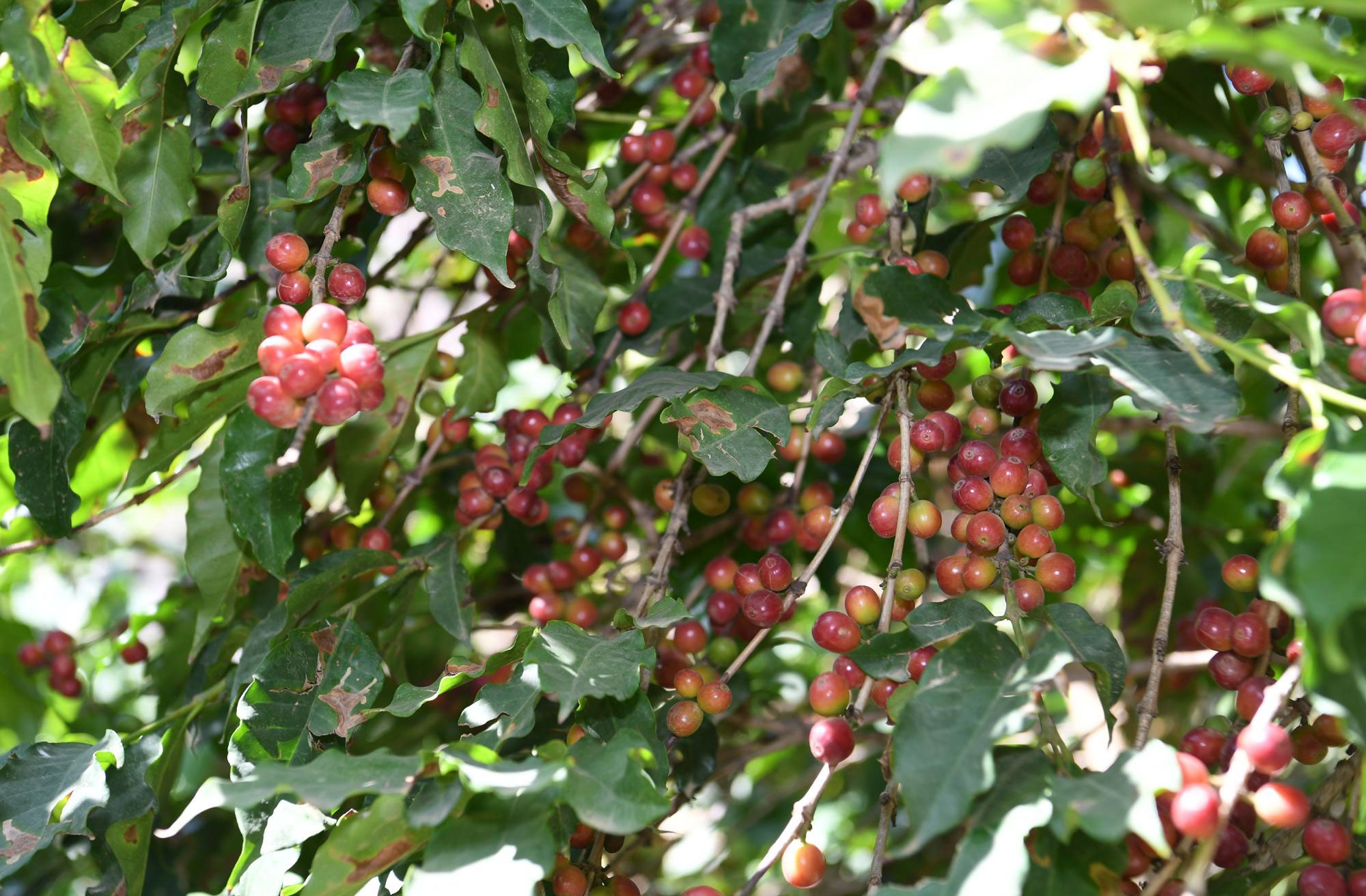
Taifi Rose
The cultural practices related to roses are an integral part of the cultural heritage and identity of the people of Taif Governorate. From December to February, farmers fertilize the soil, irrigate, and prune the rose bushes. The harvest season begins in March and lasts between thirty-five to forty-five days. The roses are harvested early in the morning and then transported to the local market for sale or to homes for distillation. Taifi rose water and essential oil are used in cosmetics, traditional medicine, traditional dishes, and beverages for flavoring. A local custom is to throw roses at guests to celebrate their arrival, and to offer roses and rose water as gifts to friends.
In Taif Governorate, there are 910 rose farms that produce about 550 million roses annually. Around seventy factories and workshops are involved in extracting and manufacturing eighty products derived from the rose. Some of these products include non-concentrated rose water, concentrated rose water (also known as bridal water), and rose oil, which is among the most expensive in the world. The market investments related to Taif roses in Saudi Arabia exceed 64 million riyals.
Saudi intangible cultural heritage shared with other countries on the UNESCO list
Al-Majlis
Al-Majlis (meeting room) is an integral part of Saudi social, political, and economic life. It is the gathering area for community members, including tribal Sheikhs and senior citizens, to discuss various issues and daily affairs, and exchange news and stories. Al-Majlis is located within the home, near the main entrance at the front of the house.
Since the era of the First Saudi State, Imam Saud Bin Abdulaziz had been hosting delegations, high-ranking princes, and tribe Sheikhs in his meeting room. He used to hold three reception meetings per day at three different times divided between the early morning, afternoon, and evening meetings, in addition to a private meeting where he would meet his sons after dinner.
Al-Majlis design in Saudi provinces
In the northern provinces of the Kingdom, characterized by low temperatures in the winter, al-Majlis features a stone fireplace called al-Mashab. It is often placed in the center of the meeting room or facing the guest-designated area. Al-Mashab is used for cooking and brewing coffee in front of guests. In the southern provinces, particularly in Aseer, the walls of al-Majlis are decorated with al-Qatt al-Aseeri art, which is used by Aseeri women to adorn walls. Al-Qatt al-Aseeri is one of the elements in the Representative List of Intangible Cultural Heritage, registered with the UNESCO World Heritage Organization.
Saudi Coffee
Coffee is a cultural heirloom intricately weaved into the Kingdom's history in terms of customs, traditions, and values of generosity and hospitality. It is also the first step of the official hospitality protocol for welcoming foreign delegations and heads of state into the Kingdom.
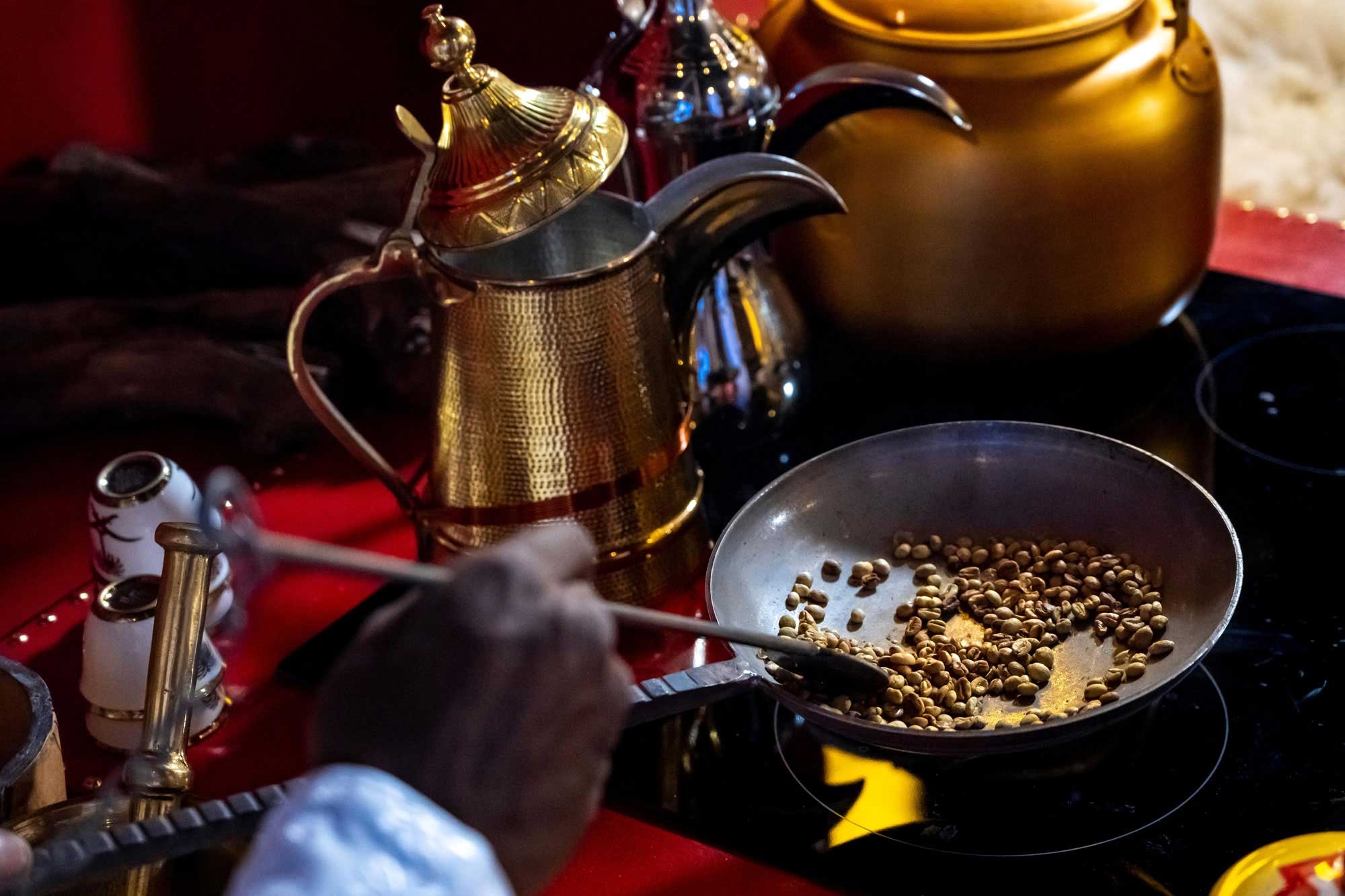
Naming Saudi Coffee
In collaboration with the Ministry of Commerce, the Ministry of Culture announced on January 31, 2022, the designation of Arab coffee as "Saudi Coffee" for all restaurants and cafes within the Kingdom as part of the Year of Saudi Coffee 2022 initiative. This initiative aims to celebrate Saudi coffee and showcase the rich cultural diversity in the methods of making Saudi coffee across the Kingdom's provinces.
Saudi coffee is prepared with two main ingredients: coffee beans and cardamom. Later, other types of beans, herbs, and flavors were added, such as ginger, saffron, cloves, and fennel. It is prepared by first roasting coffee beans in a shallow pan, then grinding them using a copper mortar and pestle. Afterward, it is placed on a stovetop in a copper dallah (pot), then removed from the heat and set aside to rest.
Coffee drinking traditions
Saudi coffee is associated with specific customs and traditions in its preparation and serving. These include pouring the coffee with the left hand, serving it in a small cup with the right hand, not filling the cup more than halfway, offering it first to the oldest and most honored guest, and the guest shaking the cup as a sign of being full. If the guest does not shake the cup, the host pours more. The person serving the coffee traditionally stands while holding the coffee Dallah until all guests are satisfied.
In celebration of the cultural value of Saudi coffee, the Ministry of Culture launched the 'Year of Saudi Coffee' initiative on December 9, 2021, to introduce Saudi cultural elements, introduce them as a cultural product, and market them locally and internationally through initiatives, activities, and events held throughout 2022. This initiative comes as part of the Quality of Life Program, one of the Saudi Vision 2030 realization programs (VRPs).
The Ministry of Culture has dedicated an electronic platform for the initiative to launch activities and campaigns, receive supportive ideas, and encourage government entities and local and international cafes to participate with innovative ideas that ensure the presence of Saudi coffee on their menus and products.
Falconry (al-Bayzarah)
It is the practice of using trained birds of prey to hunt wild animals by an experienced trainer known as a falconer. The training process of one falcon ranges from thirty to forty days. Falconry is not practically limited to falcons (Falconidae); it also includes birds of prey in general, such as eagles (Accipitrinae) and hawks (Accipitridae). The number of falconers in the Kingdom reached about twenty thousand falconers, while the number of falcons owned by hunters reached approximately 16,000 in 2019.
The Kingdom is home to endemic falcons, such as the mountain peregrine falcon (Falco peregrinus) and the lanner falcon (Falco biarmicus), while around 1.5 million falcons from migratory species pass through the Kingdom during October, including marine Peregrine falcon and Saker falcon (Falco cherrug).
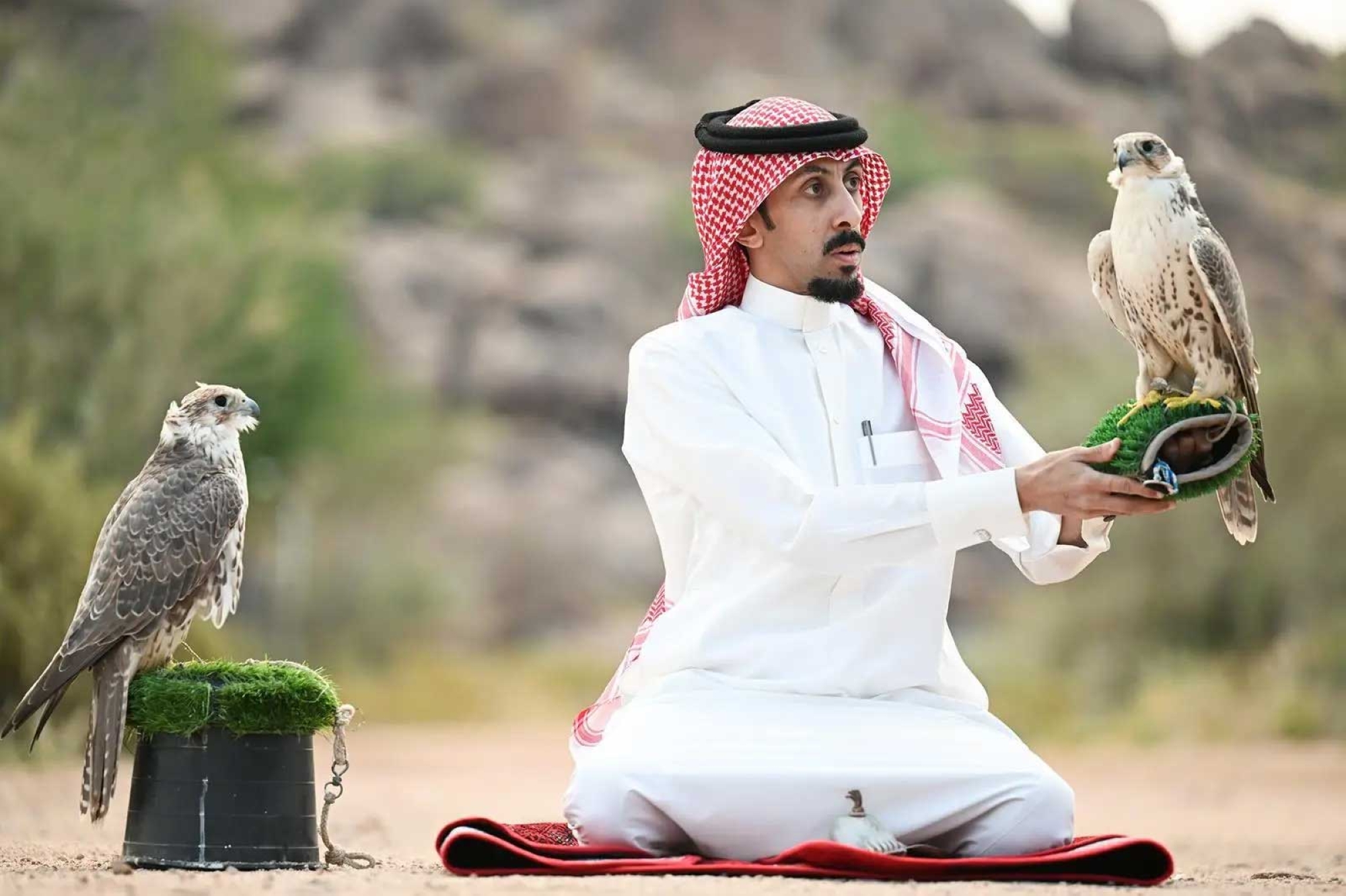
Arabic names for falcons
In the past, Arabs gave falcons various names, such as 'al-Nadir,' the strongest and largest falcon, 'al-Wasat,' smaller than al-Nadir, and 'al-Mahqoor,' the smallest and weakest falcon. Recognizing the significance of falcons in the Kingdom, the Saudi Falcons Club was established as an official government entity in 2017. The club aims to protect falcons, support environmental quality and wildlife in the Kingdom, preserve the historical heritage and traditions associated with falconry, and transfer them to future generations. In 2019, the club organized the King Abdulaziz International Falconry Festival. Since 2020, the club has featured an auction for falcons.
Al-Sadu weaving
Al-Sadu weaving is one of the oldest transitional handicrafts prevalent in the deserts of the Arabian Peninsula. It relied on camel hair, goat hair, and sheep wool, particularly Najdi sheep, known for their black wool, and Naemi sheep, characterized by their white wool. However, today, synthetic wool is currently used. Weaving a single piece of al-Sadu can take three to four days, depending on its size.
Similar to al-Qatt al-Aseeri art, al-Sadu weaving is predominantly practiced by Saudi women, who create artistic dense al-Sadu patterns distinguished by symbols and meanings known to the people of the desert.
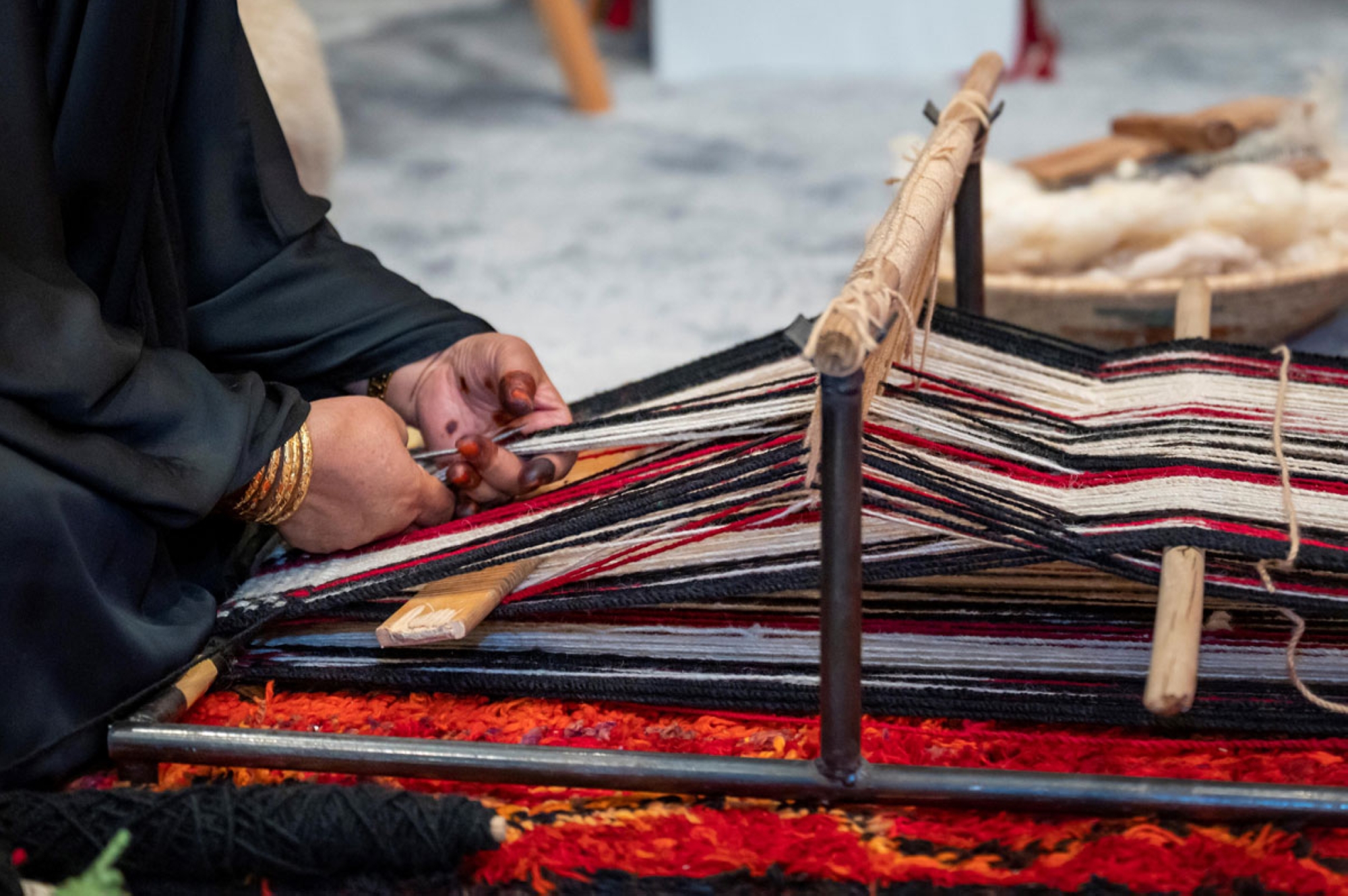
Al-Sadu weaving tools
Al-Sadu weaving involves several tools, such as the spindle, al-Mishaa, al-Sheesa (Minaqadah), al-Tighzalah, al-Midarrah, al-Minshazah, and Qarn al-Ghazal. Al-Sadu weaving process is divided into three stages, starting with shearing sheep wool and goat hair and classifying them by length and color. Then, the wool is cleansed with water to remove impurities and dust. Finally, the wool is spun on a loom and dyed with multiple colors derived from henna, turmeric, saffron, cactus, and indigo.
Several products are crafted by al-Sadu weaving, such as al-Mizwadah, al-Adool, al-Riwaq, mats, and al-Safayef that are used to adorn camels and horses, tents made of goat hair, al-Qati', armrests, carpets, al-Egal, saddles, and al-Shemlah. In recent times, al-Sadu weaving has evolved to include the creation of modern items such as smartphone cases, bracelets, and handbags.
The logo of the Kingdom’s presidency of the G20 Summit held in the capital, Riyadh, in 2020, was decorated with a visual symbol of colored threads of al-Sadu fabric, to express the cultural heritage of the Kingdom.
Arabic calligraphy
Arabic calligraphy is an iconic symbol of Saudi culture. It is used in daily transactions that require using the written or spoken Arabic language. Upon the establishment of the Third Saudi State, the Founding King Abdulaziz Bin Abdulrahman Al Saud showed keen interest in Arabic calligraphy and issued an order to preserve the books and manuscripts that teach the art of Arabic calligraphy, ensuring their protection against damage.
Some traditional techniques were employed to write in Arabic calligraphy, including natural materials such as pens made from bamboo canes and shoots, ink made from honey, black soot, and saffron. The paper was handcrafted and treated with starch, egg whites, and alum. Nowadays, modern calligraphy tools have evolved, utilizing modern technologies, such as markers and synthetic paints, with the latter often sprayed onto calligraphy inscribed on walls, signs, and buildings.
Arabic calligraphy is used in a wide array of applications, including the decoration of mosques and palaces, the embellishment of manuscripts and books, and the creation of geometric designs, jewelry, fashion, and furniture. Furthermore, artists incorporate Arabic calligraphy into their works, such as paintings, sculptures, and murals. Artisans also use Arabic calligraphy to decorate handcrafted items.
Types of Arabic calligraphy
Muslim Arabs created numerous types of Arabic calligraphy, including the Kufic script, which is the oldest form; the Naskh script; the Thuluth script, named for the thickness of the pen; the Diwan script, referring to royal courts; the Persian script named after Persia, and the commonly used Ruq'ah script. Additionally, they created the italic Hejazi script, the Jilil script, and the Levant Jilil script.
The Ministry of Culture established al-Khattat platform that won the Year of Arabic Calligraphy in 2020-2021. It is a platform dedicated to teaching Arabic calligraphy and embellishment through training courses offered by a group of professional calligraphers online.
Year of Arabic Calligraphy Initiative
In 2020, the Ministry of Culture launched the Year of Arabic Calligraphy initiative to showcase and promote Arabic calligraphy. It involved the participation of all government and private sectors, as well as individuals, by providing their proposals and involvement in its implementation. The initiative concluded at the end of 2021.
Several government and private entities participated in the Year of Arabic Calligraphy initiative. The Saudi Post (SPL) and the Ministry of Culture collaborated to launch a collection of postage stamps themed after Arabic calligraphy, which were used throughout 2021. The Ministry of Culture also designed an Arabic calligraphy identity and applied it to two Dreamliner 787 aircraft. In collaboration with the Ministry of Culture, the Ministry of Sport launched a campaign to promote the initiative by writing players' names in Arabic calligraphy on their jerseys during the club league. Additionally, the initiative's logo was displayed on a digital screen atop Tuwaiq Mountain, and calligraphers wrote passengers' names on their tickets in Arabic calligraphy.
Prince Mohammed Bin Salman International Center for Arabic Calligraphy
It is a global center overseen by the Ministry of Culture, dedicated to teaching Arabic calligraphy. Formerly known as "Dar al-Qalam," the center was established in al-Madinah al-Munawwarah in 2013. It comprises several components, including a museum dedicated to the history of Arabic calligraphy, an institute for teaching the arts and techniques of Arabic calligraphy, a gallery for calligraphers, and a center for hosting Arab and Muslim calligraphers. In 2020, in conjunction with the Year of Arabic Calligraphy initiative organized by the Ministry of Culture during 2020 and 2021, the center was renamed Prince Mohammed Bin Salman International Center for Arabic Calligraphy.
Date palms
Palm trees serve as a national symbol, a food source, and an economic resource in the Kingdom. A palm tree appears on the Kingdom's official emblem and flag, with two Arabic swords intersecting near its trunk.
The Kingdom houses approximately thirty-six million palm trees, of which twenty-seven million are fruit-bearing, and the annual date production reaches approximately 1.58 million t. Palm cultivation is concentrated in several Saudi provinces, topped by Riyadh Province, which boasts nearly nine million palm trees, accounting for 25 percent of total palm trees in the Kingdom, according to the General Authority for Statistics survey in 2020.
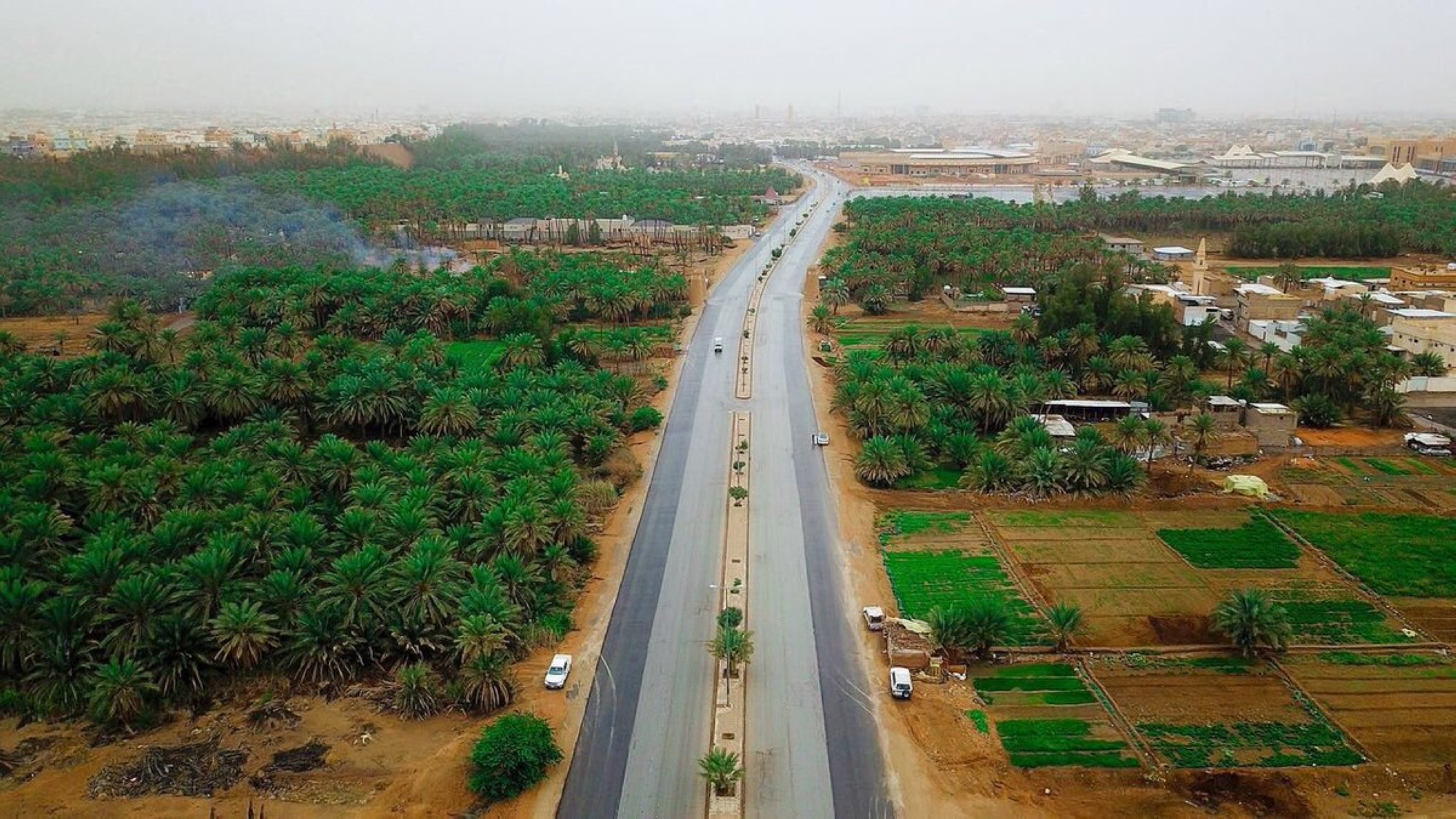
Date palm cultivation regions
Palm tree cultivation is widespread throughout most regions of the Kingdom, except for the Sarwat Mountains and southern Tihama regions, where the climatic conditions are unsuitable for palm tree growth. Based on soil, climate, and water availability, agricultural areas have been divided into three groups which are the 'Eastern Oasis Group,' including the al-Ahsa Oasis and the Yabrin Oasis; the 'Northern and Central Oasis Group,' extending from al-Jawf and Hail in the north, passing through Qassim, ar-Ras, as-Sir, al-Washm, az-Zulfi, al-Arid, Riyadh City, al-Kharj, Hawtat Bani Tamim, al-Hariq, al-Aflaj, and reaching Wadi ad-Dawasir; and the 'Western and Southwestern Oasis Group,' encompassing oases in al-Madinah al-Munawwarah, Yanbu, Khaybar, al-Ha'it, Bishah, Ranyah, northeast of Abha, Turubah, al-Khurmah east of Taif, al-Aqiq town east of al-Bahah, Thee Ain in Tihamah within al-Bahah, and Najran.
The Kingdom has shown keen interest in palm trees and provided comprehensive agricultural care, encompassing services such as seedling provision, irrigation, bagging, pruning, trimming, pollination, de-thorning, and leaf cleaning. The Ministry of Environment, Water, and Agriculture provides several services for the care of palm trees, including guidance services, methods for controlling pests, insects, and diseases, and organizing agricultural seminars. Furthermore, the National Center for Palms and Dates launched the 'Palm Care Guide' aimed at nurturing palm trees throughout their growth stages and exploring traditional and modern propagation methods.
Palm tree propagation methods in the Kingdom are diverse, including sexual propagation, an ancient, original, and cost-effective method traditionally known as conventional and seed propagation. Seed propagation is another traditional and successful method used for both ancient and modern date palm cultivation, allowing for the production of offspring similar to the parent plant. This method involves the use of suckers and offshoots. Tissue propagation method is a modern technique employed to propagate disease-free plants of certain varieties. It enables the production of large quantities of plants of a specific variety with low sucker production through traditional methods, such as al-Barhi date.
Al-Heda'a
It is a vocal expression with various melodies, chanted by herders and accompanied by certain calls, used as a means to summon camels and convey specific messages in different situations, such as calling them to gather in the morning, to congregate around the watering place, or to rest in the evening. The practice of al-Heda'a is not limited to men; women and children are also involved, training on it from a young age.
Vocal forms of al-Heda'a
Herders sing many chants. For instance, 'al-Hawbala' refers to a solo vocalization by a herder, known as 'al-Saliq' among the people of Jazan. 'Al-Walsh,' on the other hand, involves two herders, one providing vocals while the other accompanies them on a flute.
Various al-Heda'a competitions exist, including one for young herders with beautiful voices, 'al-Bath' race where two herders combine their herds and the one whose camels respond best wins, and 'al-Hajij' race, a twenty km competition where herders use their vocal skills to motivate their herds, with the winner being the first to cross the finish line.
Al-Heda'a is widespread throughout the Kingdom desert, where camel herding and breeding are prevalent. It is also common in several regions of the Kingdom, including Qassim, Jazan, Tabuk, Hafr al-Batin, al-Ula, and Rumah.
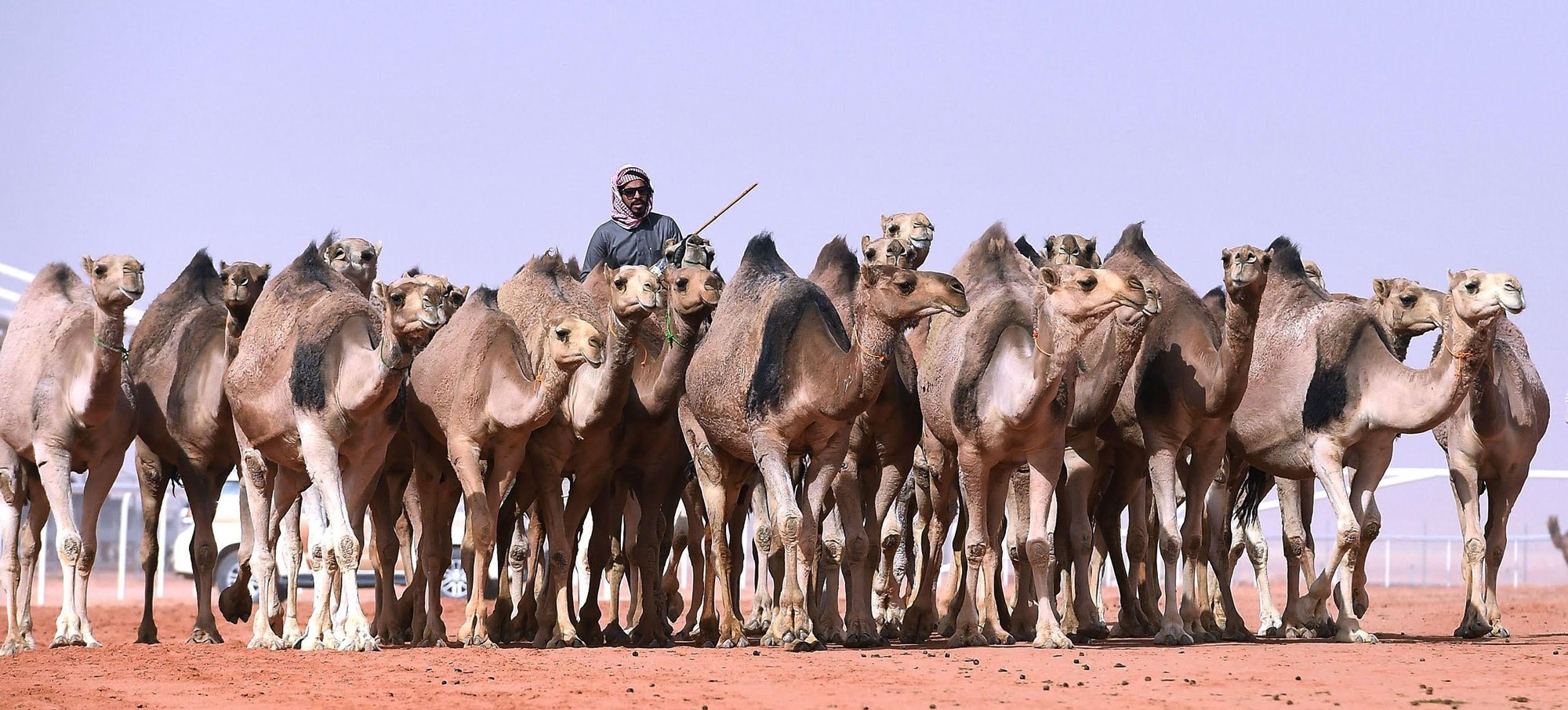
Harees dish
Harees is a traditional popular dish in the Kingdom and some Gulf countries, made from wheat, meat, and ghee. It is consumed during breakfast and dinner, often prepared in large quantities due to the effort required to clean and grind the grains, and is served in large dishes. Harees is eaten using the thumb and index finger while sitting on one knee. The dish is particularly popular during Ramadan, in hospitality, and at social occasions such as weddings. It is also part of the social and cultural fabric in the Kingdom, the United Arab Emirates, and Oman, appearing in folklore, proverbs, and poetry. Generations pass down the skills and knowledge associated with preparing Harees, as well as teaching it through various methods.
Henna
The Henna plant grows in hot regions, and its leaves are harvested twice a year, then dried, ground, and processed into a paste. The methods and ingredients used to prepare the paste vary depending on its intended use. It is commonly used by women for decoration, such as dyeing hair or decorating the hands and feet. Henna is also considered a symbol of joy and is used in handicrafts and for medicinal purposes, including treating some skin diseases. The use of henna is often accompanied by chants, songs, and poems.
In the Kingdom, Henna is traditionally associated with weddings in some regions, where women decorate their hands and feet with henna designs. The night before the wedding is known as "Henna Night" or "al-Ghamrah." A specialist in Henna application, known as the "Muhanniya" or "Henna Artist," is responsible for decorating the bride, and this practice is considered a popular women's craft and a distinctive form of artistic skill. It represents a piece of art etched onto the bride's hands, symbolizing joy and celebration, while reviving ancient customs that women take pride in.
Henna designs on the bride's hands vary in aesthetic forms, extending up to the shoulders, and sometimes covering the legs up to the middle of the calves. These designs include the Indian style or the "Damask rose" design specifically for the bride, which can be done with filling or shading. Other Henna artists often participate in applying Henna to the bride's sisters and close female relatives, using traditional motifs such as the "Mish'ab" for elderly women and simple designs like for children. "Henna Night" is accompanied by traditional songs and chants, celebrating the bride and sharing in the joy of her marriage.
Engraving on metals
Engraving on metals (gold, silver, copper) is an ancient practice that dates back centuries. It involves engraving words, symbols, or hand-drawn patterns onto metal surfaces for decorative, practical, or celebratory purposes. Engravings are typically either concave or convex, and their meanings and social or symbolic functions vary. Engraved items, such as jewelry or household tools, are often given as traditional gifts. The practical techniques of metal engraving are passed down through generations and taught in workshops organized by relevant institutions.
Semsemiah Instrument (al-Simsimiya)
The semsemiah instrument is a traditional musical instrument similar in structure to a harp. It is made and played in the Kingdom, especially in coastal areas. Musicians typically craft it themselves using natural or recycled materials, such as wood or metal. The structure of the semsemiah instrument consists of three wooden pillars that form a triangle and is equipped with five strings. It is played during musical performances, festivals, weddings, and cultural celebrations.
Intangible Heritage Association in Saudi Arabia
Under the umbrella of the Ministry of Culture's strategy for the non-profit sector, the first professional association for intangible cultural heritage was established in the Kingdom on November 25, 2021, with a group of heritage enthusiasts. The association aims to provide services to intangible heritage enthusiasts, support their efforts, and contribute to enhancing and developing the environment in which they operate.
Intangible Cultural Heritage Initiative
In collaboration with the Ministry of Education, the Ministry of Culture launched the Intangible Cultural Heritage Initiative on December 16, 2021, aiming to encourage middle and high school students to conduct field and library research, develop their research skills, and foster awareness and preservation of the Kingdom's intangible cultural heritage. The initiative encompassed multiple tracks of intangible cultural heritage, including traditional crafts unique to the province, traditional cuisine and its presentation methods, the tools used in its preparation and their connection to heritage, folk performing arts, folk tales, proverbs, poems, and folk songs, as well as traditional games.
Related quizzes

